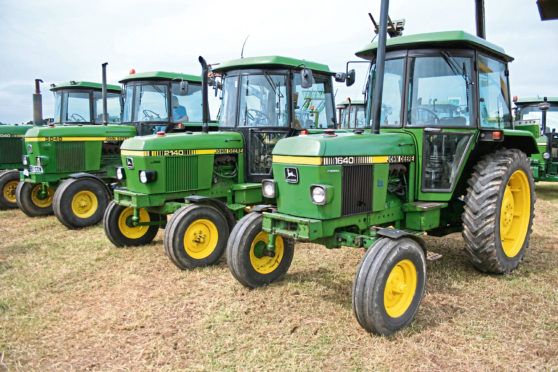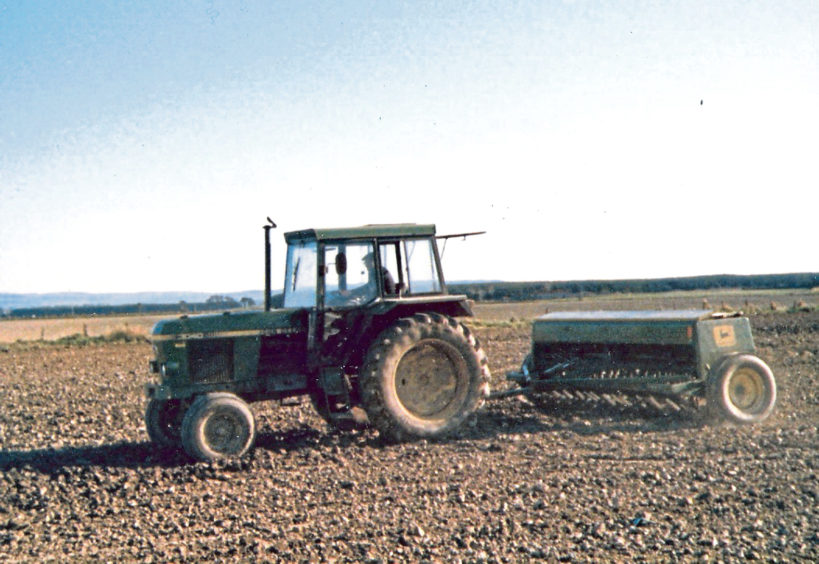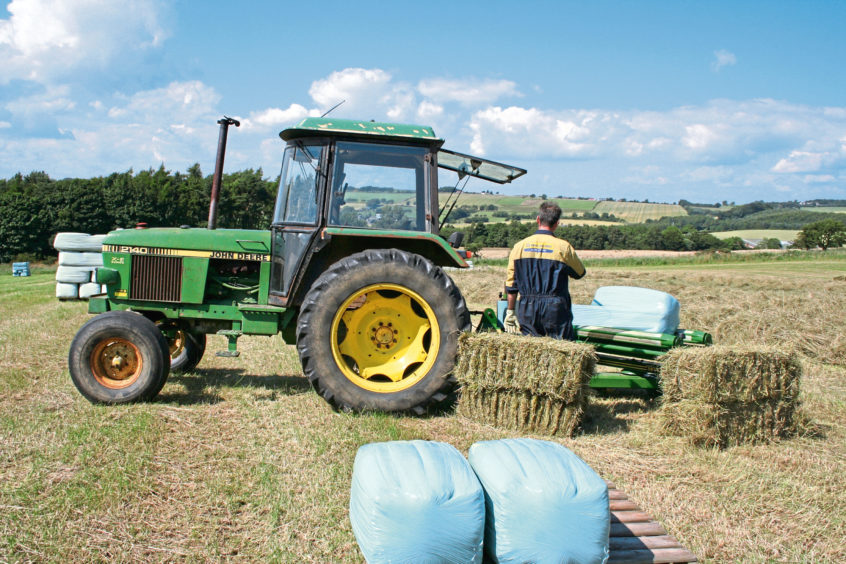John Deere launched the new 40 Series range of tractors, advertised as the Schedule Masters, in autumn 1979.
Dealers showed them off at open nights and at working demonstrations on local farms to allow prospective customers to get to grips with all seven models being offered in the sub-100hp bracket.
These new models were built for the European market at Mannheim in West Germany and joined the larger US-built 40 Series tractors, which had been launched almost two years earlier.
The company hoped to increase its market share in the UK with this new range.
In 1977, John Deere had achieved a 7.9% share of UK tractor sales, which was a 28% rise on the previous year.
These sales were of the previous 30 Series tractors, which along with their range of combines, balers and foragers had seen many farmers buying John Deere machinery for the first time.
Deere hoped this new range would encourage even more customers through the doors.
The tractors had many new features which helped the brand become more user friendly to British farming systems.
Mechanical four-wheel drive, which was available on all but the two smallest models in the range, was a great improvement on the old hydraulic four-wheel assist system used previously.
This system was manufactured by the famous German concern of ZF which was very experienced in this area.
Factory-fitted pick-up hitches were a great improvement on some of the locally built types fitted previously, if any were fitted at all.
Another smaller but good feature was the fitting of check chains to stop implements on the three-point linkage from swinging from side to side.
This was a great improvement on the sway blocks which were previously depended upon.
Powering the tractors was a new range of water-cooled engines designed to give higher output, not by higher revs but by higher cylinder displacement.
The transmission saw the introduction of a synchromesh gearbox while still having John Deere’s famous Hi Lo system.
Power steering was also improved and the tractor’s wheel base was increased and the longer length allowed for the fuel tank to be fitted at the front for greater stability.
Hydraulic capacity was also increased as was the speed of operation.
Driver comfort and safety was very much under the microscope during this period and John Deere did not hold back in this department with a choice of drivers’ operating platforms.
The larger tractors in the range could be fitted with the US-developed SG2 cabs which stood for Sound Guard Series 2.
These were exceptionally advanced working environments, although some people did not like the single door access.
A lower cost option was also available in the form of the Swedish-built Sekura OPU cabs (operator protection unit).
A low-profile version of the cab was available for the smaller tractors that may have had to work in and around low buildings.
Although the tractors were built in Germany, a great deal of the research work and testing was carried out at John Deere’s facilities at Waterloo in Iowa.
Indeed, at this time the company invested £500,000 in research and development.
Further development work was carried out at the National Institute of Agricultural Engineering at Silsoe in Bedfordshire who worked on testing regarding vibration and noise in the cab.
The full line-up of the range began with the 1040 model at 50hp followed by the 1140 at 56hp.
The 1640 had 62 horses under the bonnet while the 2040 had 70.
Probably the most popular tractor in the range was the 2140 at 82hp, while the 3040 had 90hp on tap and the largest – the 3140 – kicked out 97hp.
British farmers could also buy the larger US-built 4040 4240 4440 and 4640 models and the mighty 215hp articulated 8440.
For more specialised uses there were smaller tractors in the 40 series which were not really aimed at British farmers. These included the 840 and 940 models.
Later, four lower spec tractors marketed as the XE range were offered with yellow cab roofs instead of the more common green versions.
John Deere produced a huge amount of advertising material to introduce this range.
This has gone a long way in seeing the brand being at the top of the UK tractor sales charts for a number of years now.


